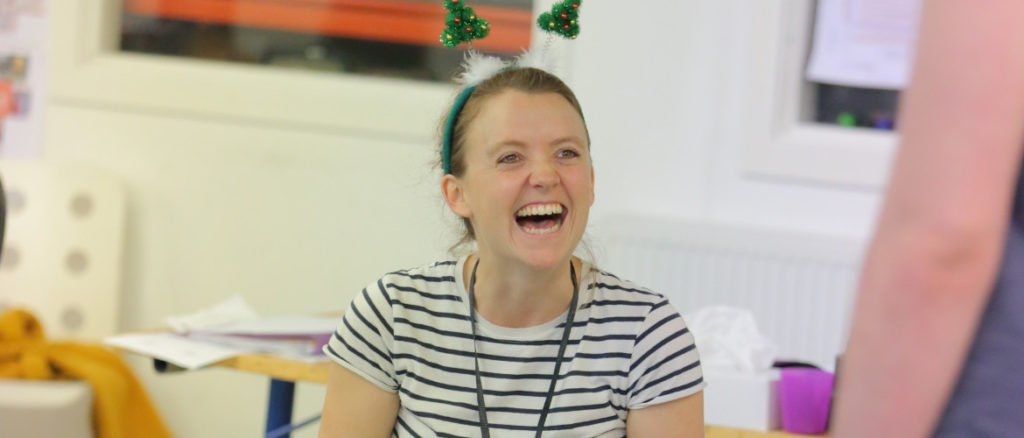
Kes director Amy Leach
TSOTA’s Rich Jevons talks to Amy Leach about directing the West Yorkshire Playhouse adaptation of Barry Hines’s seminal 1968 coming of age northern novel A Kestrel for a Knave.
Can you tell us a bit about what you like doing the community venues like you did with Little Sure Shot and are going to do with Kes?
I think what is fantastic about the community tours that the West Yorkshire Playhouse do is that [Artistic Director] James Brining’s vision for it is not to do a tiny show in a shoe box that is second best to what happens here in the theatre. Actually what he has done is that the same productions are going there as well in spaces shared with the communities. It shows that we make quality work. And I really like that challenge of the two spaces – there is something really interesting in having to think how to do this without hardly anything but tell the same story and hit the same emotional level.
What do you admire about the original book?
I first read it when I was a teenager and I remember loving it at the time. It was really nice reading something in your own accent and hearing that voice put in such a poetic way – he gives a poetic voice to the northern accent and identity. Having returned to the book it is just so fantastically well-written. It is short, so succinct but it paints this really big world and the picture of this boy within it. It is so vivid and visceral and is still so moving and gripping.
It is a very working class piece too isn’t it?
Yes, there has been a lot in the press recently about who is telling the working class voice and asking where are our next generation of Pete Postlethwaites and Julie Walters going to come from in the acting world. Where are our working class writers and actors? Because once upon a time you could have a free education but now that is not the case.
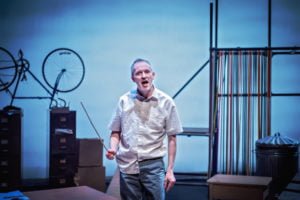
Jack Lord in Kes. Photo: Anthony Robling
What do you take from Ken Loach’s film adaptation?
Ken Loach, like Barry Hines, is keen to tell the stories of those who don’t often have their stories told. And giving them a dignity and honour, and Barry’s really is an everyman’s story. People absolutely adore that film because, watching it again recently, you forget how funny it is, but it is a very moving film too, it is everything you want in a great story.
Can you tell us about the character of Billy Casper as you have portrayed him?
Billy Casper for me is a boy who is a bit of an everyman figure. He is someone who has not just has the economic poverty in life but also an emotional poverty and what I’d describe as a poverty of ambition. So there is not really anybody who has told him he can be great or that he can achieve or that he can have dreams that he can follow. So for me is a bit like a caged bird he is restricted emotionally. But like when you train a bird you need to be gentle and patient, that is how Billy needs to be trained in a gentle and patient way. And that is what he learns by caring for this bird. So just for the duration of one summer he has the opportunity to ‘fly’.
How has Robert Alan Evans approached his adaptation?
Robert had done this version before and I saw it and loved it and thought it was brilliant. So the premise of this adaptation of the book is that it really focuses down on Billy’s story, it is not trying to recreate the film on stage, it is very much doing something that can only be done on stage. So it is hinted at that the Man is actually Billy grown up, but we get the sense that he has come back into his memories at some point of crisis in the future. So in the play The Man plays all of the different characters of Billy’s world. He is kind of stepping into the memories of all these characters. So in a way what you are watching on stage are two Billy Caspers, the young one and the older one. So it is a really interesting look at memory and how if we had the opportunity to go back to face our younger selves what would we say. Would we stop ourselves from making the mistakes and the highs and lows of our teenage lives? Or is that a necessary part of life, they make us who we are?
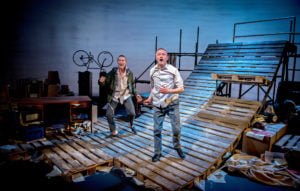
Dan Parr and Jack Lord in Kes. Photo: Anthony Robling
How did you go about casting the two characters?
I wanted both characters to be northerners and to have an essence of each other – in effect two versions of the same person. And the Man has to be extremely versatile to play the different characters in a very subtle way. And they both had to be able to portray a huge amount of emotional depth. And they needed to be physically fit and have an ability to access a physical language.
What are the difficulties of doing a two-hander?
All plays and all cast sizes have their challenges but with a two-hander it means there are far less voices in the room but people do get a bit more tired. You don’t have any breaks. For me it adds so much to the exploration of Billy as a character but creatively it is really fascinating seeing how we can conjure up lots of different relationships from just two people.
And how have you gone about depicting the bird, or is that a secret?
No. The bird is very much a metaphor for Billy himself and what we’ve got are some very specific moves when he is flying the bird.
And what can we expect in terms of design?
It is described as a pile of junk and we have got a lot of objects from 1968 in this waste ground of memory. So this production asks the audience to use their imagination all the way through they have to work quite hard which for me is the best type of theatre.
25 May to 4 June at West Yorkshire Playhouse, Leeds.
Filed under: Theatre & Dance
Tagged with: Amy Leach, Barry Hines, Ken Loach, Kes, Rich Jevons, West Yorkshire Playhouse
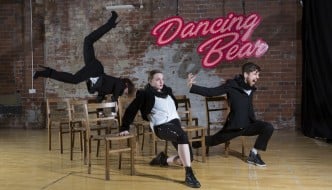

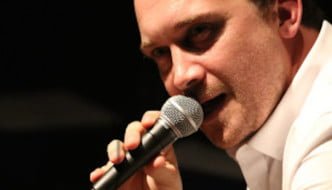
Comments